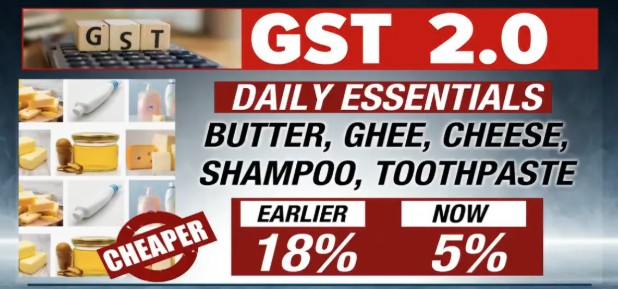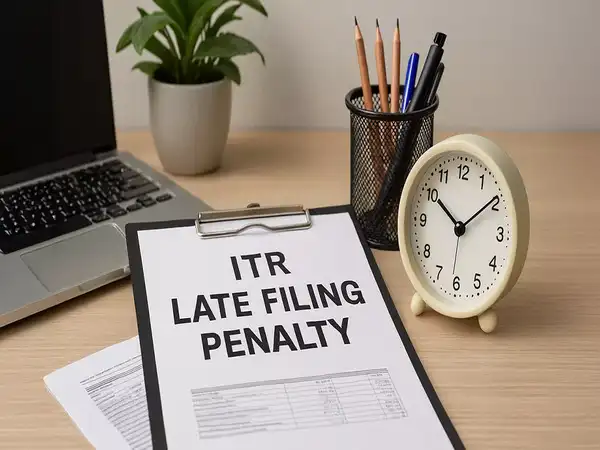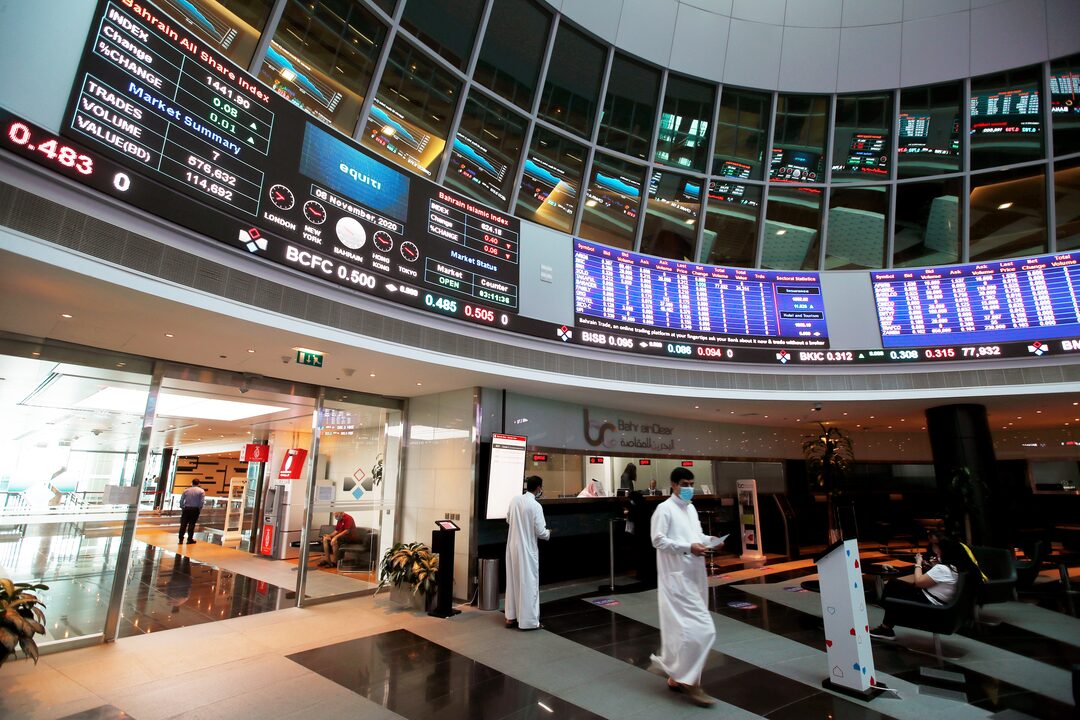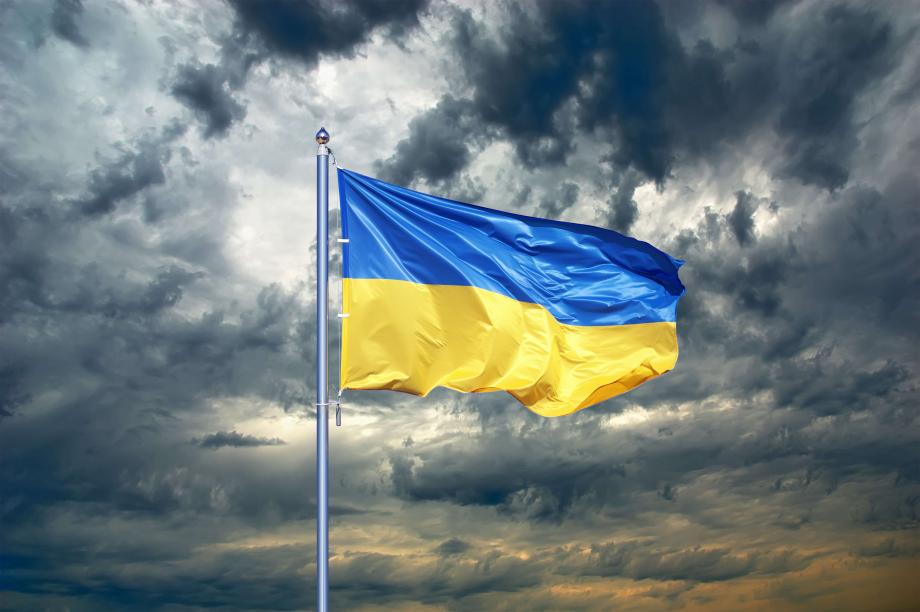Top Trending Finance & Stock Market News & Highlights


GST reform: starting Monday, these goods will be subject to the highest tax. View the complete list
September 22 GST changes: Under the new tax structure, which goes into effect on Monday, items falling within these categories will be subject to the newly revised highest tax rate of 40% GST. View the items' list here.After its 56th meeting on September 3, 2025, the GST Council, which is led by the Indian federal government, voted to streamline the indirect tax system in India by redesigning the current goods and service tax (GST) slab structure into a "two-tier" system.Indian customers will benefit from a revamped "two-tier" tax structure that goes into effect on Monday, September 22, 2025. Depending on the type of commodity sold in the country, it will be subject to either the 5% or 18% tax band. In India, GST is now imposed in four slabs: 5%, 12%, 18%, and 28%. However, the government has since modified these slabs. Many products sold in the Indian economy will see price reductions as a result of the federal government's action; nevertheless, starting Monday, a wide range of products will also be subject to higher consumer taxes. 1. Sin Goods: Generally speaking, sin goods are things that are detrimental to society and health, such as cigarettes and pan masala. Cigarettes, pan masala, beedi, and other tobacco goods including chewing tobacco and gutka, as well as online gaming and gambling, would all be subject to a 40% GST tax starting on Monday, September 22, 2025. 2. Luxury cars: Four-wheelers with an internal combustion engine (ICE) capacity greater than 1,200cc and a length greater than four meters were also placed in a 40% tax level by the GST Council. In the past, the ex-showroom pricing of SUVs and MPVs, which are included in this group, was increased by 28% GST and 22% Cess. 3. Over 350cc two-wheelers: The GST Council raised the tax rate for two-wheelers with engines larger than 350cc from 28% GST and 3% Cess to 40%. Despite the removal of the Cess levy, two-wheelers with engines larger than 350cc will now be subject to a higher tax rate. 4. Soft drinks: The central government raised the GST rate from 28% to 40%, which will result in a price increase for soft drinks and other non-alcoholic beverages like Coca-Cola, Pepsi, Mountain Dew, Fanta, and flavor-infused waters. 5. Items that cost more when you're in the 18% tax bracket: Items that will be subject to GST at the higher 18% slab starting on Monday, September 22, 2025, include dining at restaurants, particularly those with air conditioning and premium outlets; consumer durables like refrigerators, washing machines, and air conditioners; beauty and grooming services at salons and spas; and high-end smartphones and imported devices.
Published 23 Sep 2025 01:19 PM


Live Updates on New GST Rates: When GST 2.0 goes into effect, food, cars, and televisions all get cheaper.
GST Reforms 2025 List: Goods and Services Tax (GST) reforms have become effective today, September 22, marking a historical shift in the country’s indirect taxation by merging four slabs into two (5% and 18%) and a special tax slab of 40% for “sin goods".The GST council, led by Finance Minister Nirmala Sitharaman, early in September announced a major overhaul in the indirect taxation system, aimed at simplifying the slabs, boosting the consumption and rationalizing the rates. Under the new plan, the government is set to merge the four slabs into two main categories with an additional “sin tax" bracket: 5% slab — for essential goods. 18% slab – for most other goods and services. 40% slab – for luxury and sin goods such as tobacco, alcohol, betting, and online gaming. This consolidation is expected to make tax compliance easier and also reduce prices on many items currently taxed at 12% or 28%.This consolidation is expected to make tax compliance easier and also reduce prices on many items currently taxed at 12% or 28%.Consumers will see essential items becoming cheaper from September 22, as several sectors from FMCG to Auto have announced earlier to pass on the benefits of lower GST to them.
Published 22 Sep 2025 05:13 PM


Live updates for the ITR due date: Will there be another extension of the income tax return deadline?
Date of ITR due REAL-time updates: The deadline for filing Income Tax Returns (ITR) for the assessment year 2025–2026 is now. Over 6.69 crore returns have already been received by the Income Tax Department, of which over 6.03 crore have been validated and 4 crore have been processed.Taxpayers who miss today's deadline risk interest on unpaid taxes, delayed refunds, and late fines of up to ₹5,000 (limited at ₹1,000 for individuals with incomes up to ₹5 lakh). Therefore, it is essential to file and confirm returns on time in order to prevent fines and guarantee prompt refund processing.The deadline is applicable to non-audit instances, such as the majority of salaried individuals, small enterprises or professions under the presumptive taxation plan, and Hindu Undivided Families (HUFs). It is recommended that taxpayers refrain from spreading false information about extensions and instead rely solely on official updates from Income Tax India.In order to assist last-minute filers in appropriately completing submissions, the department's helpdesk is open around-the-clock and provides assistance via phone, live chat, WebEx sessions, and social media.The department's help line is open around-the-clock, providing assistance via phone, live chat, WebEx sessions, and social media to help filers who are submitting at the last minute appropriately.
Published 15 Sep 2025 05:53 PM


Closing Bell: Sensex up 324 points, Nifty above 24,950; IT and PSU Banks rise, automobiles down
On September 10, Indian equities indices concluded well, with the Nifty closing above 24,950. The Nifty was up 104.5 points, or 0.42 percent, at 24,973.10 at the closing, while the Sensex was up 323.83 points, or 0.40 percent, at 81,425.15.We'll be returning tomorrow morning with all the most recent news and alerts as we wind up today's Moneycontrol live market blog. To view all of the global market activity, please visit https://www.moneycontrol.com/markets/global-indices.On Wednesday, markets gained almost half a percent, continuing their upward trajectory. Following a gap-up beginning, the Nifty index spent the first half of the day moving within a small range. However, volatility in the second half of the day reduced some gains, and it ultimately finished around 24,973 levels.With advances of more than 2.5 percent, the IT sector maintained its recovery, followed by the real estate, banking, and energy sectors. The auto industry, on the other hand, saw profit booking following multiple outperforming sessions, losing more than 1%. With the midcap and smallcap indices rising between 0.75% and 1%, market breadth stayed strong, supporting the bullish tone in both frontline and broader markets.Positive foreign capital market flows following a period of persistent depreciation, as well as increased confidence regarding the status of trade discussions between the US and India, helped to boost sentiment and maintain the upswing.Although the markets are slowly rising due to encouraging signals, the Nifty will need to maintain its participation from the two main industries—banking and IT—in order to progress toward the 25,250–25,400 range. Support has moved to the 24,650–24,750 level on the downside. In order to build up fundamentally sound counters across the board, we advise employing intermediate drops or consolidation phases while keeping a positive bias.
Published 10 Sep 2025 08:40 PM


Finance & Stock Market
Finance & Stock Market is financial management, which covers tasks including forecasting, budgeting, borrowing, lending, and investing. Finance can be broadly classified into three categories:
- Personal Finance
- Corporate Finance
- Public/government Finance
Lending, banking, investing, forecasting, and a wide range of other topics pertaining to the distribution and trade of financial assets are all included in the broad industry that is finance.
- NYSE - USA
- Nasdaq - USA
- Euronext - Netherlands
- Shanghai Stock Exchange - China
- Japan Exchange Group - Japan
- Shenzhen Stock Exchange - China
- Hong Kong Exchanges - Hong Kong
- National Stock Exchange of India - India
- LSE Group - UK
- Saudi Exchange - Saudi Arabia


Russia and Ukraine stop transporting gas to Europe after 50 years.
Following the expiration of a crucial transit agreement, both parties announced the suspension on Wednesday. At a time when the area is depleting winter storage at the quickest rate in years, the interruption will put additional pressure on supply as several central European nations that have depended on the flows would have to obtain more expensive gas elsewhere.Following Kyiv's refusal to permit any transit that finances Moscow's war machine, Russia ceased shipping gas to Europe through Ukraine, ending a fifty-year-old conduit.Following the expiration of a crucial transit agreement, both parties announced the suspension on Wednesday. At a time when the area is depleting winter storage at the quickest rate in years, the interruption will put additional pressure on supply as several central European nations that have depended on the flows would have to obtain more expensive gas elsewhere. Despite the three years of war, Ukraine has remained a vital route for gas supplies into Europe. Countries are still suffering from the aftermath of an energy crisis brought on by Russia's invasion of its neighbor, even though the route only supplies 5% of the region's demands. Recently, the impending cutoff contributed to a market where petrol prices have increased by more than 50% annually.After the five-year transit agreement expired, Russia's Gazprom PJSC suspended deliveries on New Year's Day, claiming that there were no "technical and legal opportunities" for shipments due to the Ukrainian side's "repeated and explicit refusal to extend these agreements."The Energy Ministry in Kyiv acknowledged the halt, stating that as of 7 a.m. local time, Russian flows across its territory were stopped. Additionally, Slovakia's network operator verified that it was not getting gas.


Upcoming IPOs in 2025: LG Electronics, Zepto, Ather Energy, NSDL and 10 more IPOs on the radar
Complete List of India's Most Recent Upcoming IPOs: Examine the IPOs that LG Electronics, Zepto, Ather Energy, and others have planned for 2025. Keep abreast on these significant market entries!Future IPO 2025: As the clock ticks down to 2025, more than 35 businesses have received the green light from market watchdog SEBI, and there are currently 55 businesses in the pipeline awaiting approval. In addition, a number of high-profile businesses from many industries will be preparing for their public debuts in the upcoming year.India's LG Electronics The South Korean electronics giant's initial public offering (IPO) is one of the most anticipated in 2025. Through an Offer-for-Sale (OFS) of 10.1 crore shares, the business hopes to raise Rs 15,237 crore.


Next Week on Dalal Street: Is the Nifty a bear trap? Why there may be a buying chance in this dip
The markets ultimately gave in to selling pressure after failing to break above key resistance levels, despite remaining in the green after a strong rally the week before. Over the previous five days, the Nifty remained under intense selling pressure.sessions and broke through important daily chart support levels. The Nifty traded in a broad 1,243-point range during the previous few days, and the range stayed broader on the expected lines. Additionally, volatility skyrocketed; on a weekly basis, the India VIX jumped 15.48% higher to 15.07. The main index ended the week down 1,180.80 points (-4.77%) after a poor showing. The Nifty has displayed numerous technical events in recent days, emphasizing the significance of a few critical levels.20-week MA for a while; this emphasizes how crucial these levels are as major market resistance points. In the process, the Nifty dragged the resistance points lower and closed below the crucial 200-DMA, landing at 23,834. Additionally, the Nifty hasfinished at 23,530, just above the critical 50-week MA line. When this level was previously challenged, the markets had produced a spectacular recovery. The way the Nifty behaves in relation to the 50-week MA will dictate the course for the upcoming week as well as the short term.Due to the Wednesday Christmas holiday, the following week is shortened. Monday should be a mild start to the week; possible resistance levels would be 23,750 and 23,830. The lower-side supports are located at 23,500 and 23,285.


As the Fed dampens sentiment ahead of the BoE, the UK's FTSE drops to a one-month low.
Both the FTSE 100 and FTSE 250 midcap indexes saw a 1% decline. At 1200 GMT, the BoE is anticipated to hold rates at the policy decision. UK gilt yields and sterling are rising. Fears of slower-than-expected rate decreases cause homebuilders to decline. Water utilities benefit after a 36% increase in water billsDecember 19, Reuters As the U.S. Federal Reserve's overnight forecast of a slower path of interest-rate decreases lowered investors' risk appetite globally, the UK's flagship FTSE 100 stock index fell 1% and returned to its close to one-month low on Thursday.was down 1% as of 0900 GMT, reaching its lowest level since Nov. 21. This was just two days ago, mirroring the day's decline in European and Asian markets as well as Wall Street's decline the day before. Ahead of Donald Trump's second term in the White House next month, the Fed's new predictions called for two 25-basis-point rate reduction in the next year due to growing inflation. Policymakers expressed concerns about inflation possibly rekindling, which may keep rates higher for longer. They anticipate slightly greater economic growth and lower unemployment next year.Additionally, a rise in British gilt yields and a stronger pound sterling continued pressure on UK stocks. Ahead of a local monetary policy announcement at 1200 GMT (7:00 a.m. ET), where the Bank of England is anticipated to maintain rates at their current levels, investors were also on edge. The top of the watch list will be any clues on the direction of policy going forward, particularly in light of this week's impressive wage statistics. Fears of a slower-than-expected pace of rate cuts caused Homebuilders (.FTNMX402020), which opens a new tab, to drop 1.6%. Lenders (.FTNMX301010) and investment banking sub-indices (.FTNMX302020) both saw losses of more than 1% during a general market downturn.


The CBDT starts a campaign to alert taxpayers to discrepancies between their submitted ITR and AIS.
New Delhi: The income tax department announced on Tuesday that it is emailing and texting taxpayers and non-filers in cases where it has discovered discrepancies between the income reported in ITRs for the fiscal years 2021–2022 and 2023–2024 and the transactions reported in the Annual Information Statement (AIS). To help taxpayers resolve discrepancies between the income and transactions reported in the AIS and those declared in Income Tax Returns (ITRs) for the fiscal years 2023–2024 and 2021–2022—the Central Board of Direct Taxes (CBDT) announced in a statement that it has started an electronic campaign.Additionally, this effort targets people who have not filed ITRs for the relevant years but have taxable income or large high-value transactions recorded in their AIS.The program is a component of the e-Verification Scheme, 2021's implementation. The program is a component of the e-Verification Scheme, 2021's implementation.Informational messages about discrepancies between transactions reported in AIS and filed ITRs have been delivered to taxpayers and non-filers via email and SMS as part of this campaign.A taxpayer's complete perspective of information is provided by the Annual Information Statement (AIS). Through the income tax department portal, taxpayers can view AIS and comment on the data it displays. Both the reported value and the modified value—that is, the value after taking taxpayer feedback into account—are displayed by AIS.


Today's stock market: Broadcom rises 24% to reach $1 trillion in market capitalization, as the Dow and S&P 500 contain weekly losses
Despite Broadcom's (AVGO) surge to all-time highs, which was propelled by the chipmaker's optimistic AI-powered sales forecast, stocks saw minimal movement at the end of Friday's session.While the tech-heavy Nasdaq Composite (^IXIC) rose 0.1%, the S&P 500 (^GSPC) closed flat. The Dow Jones Industrial Average experienced a 0.1% decline.The blue-chip index recorded its sixth consecutive losing session, the longest since late February 2020, shortly before the pandemic, as the S&P 500 and Dow reported weekly losses. After management projected an AI sales gain of over 65%, a far faster pace than anticipated, Broadcom's market capitalization surpassed $1 trillion. The stock of Broadcom went up more than 20%.While Nvidia (NVDA) and AMD (AMD) declined, Marvell Technology (MRVL) and Taiwan Semiconductor (TSM) also saw increases, making Broadcom's competitors somewhat divided. On Friday, however, the Nasdaq 100 (^NDX) reached new heights as EV behemoth Tesla (TSLA) surged 4% to close at a new high. Delayed Quote (SNP) • USD S&P 500 (^GSPC)


In 2025, the Russian finance ministry anticipates that foreign investors will return to the Russian market.
A decree issued by the Russian president and approved by the Finance Ministry and Central Bank offers assurances to new foreign investors in the Russian stock market.December 12, Moscow /TASS/. During parliamentary hearings in the State Duma, Deputy Finance Minister Alexey Moiseyev stated that following the premise that "greed wins," foreign investors will return to the Russian market in the upcoming year.He added that the first indications of this inflow will appear next year. "Those of us who have watched the financial markets for a long time know that in the end, greed wins out, over everything else," he said.Furthermore, according to Moiseyev, the Russian president has approved a regulation issued by the Finance Ministry and the Central Bank that offers guarantees to new foreign investors on the Russian stock market, thereby increasing market capacity.


A significant change in China's monetary policy sparked a stock market boom. Yet 'a lot of instability' remains a threat.
Monday saw a surge in Chinese stocks following the nation's indication of a more aggressive stimulus plan for the upcoming year. According to China state media Xinhua News Agency, Beijing's senior leaders announced they will adopt a "more proactive" fiscal policy and a "moderately loose" monetary policy.Hui Shan, the chief China economist at Goldman Sachs, wrote in a note to clients on Monday, "We view the outcome as an upside surprise due to stronger easing rhetoric, relative to the low market expectations prior to the meeting." The team also anticipates the announcement of "more concrete demand-side stimulus measures" early next year. Interestingly, the economist notes that China last referred to its monetary policy stance as "moderately loose" in 2009–2010.Following the remarks, Hong Kong's benchmark Hang Seng Index (^HSI), which is dominated by huge Chinese stocks, increased by almost 3% on Monday. The upward movements were echoed by other Chinese-listed corporations and exchanges. On Monday, China's benchmark CSI 300 (000300.SS) increased by more than 1%. Chinese e-commerce behemoths Alibaba (BABA), PDD Holdings (PDD), and JD.com (JD) also saw at least 9% increases in their stock prices. XPeng (XPEV, 9868.HK), a Chinese manufacturer of electric vehicles, too had double-digit growth, increasing by about 14%.


Mideast Stocks US rate decrease wagers and OPEC+ output delays boost the majority of Gulf markets.
Investor confidence in a U.S. interest rate decrease and a possible postponement of OPEC+'s planned output increase helped most Gulf stock markets close higher Thursday. The CME Group's FedWatch Tool indicates that markets presently perceive a 74% possibility of a 25-basis-point rate drop this month.The U.S. payrolls report on Friday is likely to draw the market's attention, and the November inflation data is anticipated the following week. Because the majority of the Gulf region's currencies are based on the U.S. dollar, the Fed's choices have an effect on the region's monetary policy. Al Taiseer Group <4143.SE>, a manufacturer of alumThe index <.FTFADGI> increased by 0.1% in Abu Dhabi. A source told Reuters that OPEC+ had decided to postpone a planned increase in oil output until April 2025, which caused oil prices, which are a major driver of the Gulf's financial markets, to recoup some of their gains. As it struggles with poor demand, particularly from China, and expanding supply outside the producer group, OPEC+—the Organization of the Petroleum Exporting Countries plus allies, including Russia—is attempting to support prices with the anticipated delay. The largest lender in the Gulf, Qatar National Bank <QNBK.QA>, saw a 0.6% increase, driving a 0.5% increase in the benchmark Qatari stock <.QSI>.Egypt's blue-chip index <.EGX30> ended the day flat outside the Gulf. At a news conference on Wednesday, Prime Minister Mostafa Madbouly announced that Egypt intends to list three or four military-owned businesses on the stock exchange. The government's comprehensive IPO calendar would be made public the following week. Saudi Arabia At 11,932, <.TASI> increased by 0.4%. Abu Dhabi .FTFADGI> increased by 0.1% to 9,277 Dubai At 4,820, <.DFMGI> dropped 0.7%. Qatar At 10,392, <.QSI> increased by 0.5%. Egypt At 30,840, <.EGX30> was flat. Bahrain At 2,036 <.BAX> closed the flat. OMAN eased 0.1% to 4,572 <.MSX30> KUWAIT <.BKP> increased 7,808 by 0.2%.0.SE> increased 3.6%, contributing to the 0.4% advance in Saudi Arabia's benchmark index <.TASI>.


The yield on the 10-year Treasury note increases as investors wait for further job statistics.
As investors expected additional labor data that was due this week, U.S. Treasury yields increased on Wednesday.The yield on the 10-year Treasury increased by almost three basis points to 4.2478% at 4:28 a.m. ET. In the meantime, the yield on the 2-year Treasury increased by over one basis point to 4.1814%.With the release of the ADP Employment Change report for November on Wednesday, investors are anticipating additional labor data this week. According to economists surveyed by Dow Jones, the report's measure of private sector employment growth in the United States is expected to increase by 163,000 positions over the previous month.This follows the release of the JOLTS job opportunities data on Tuesday, which revealed that 7.74 million job openings were posted in October, exceeding Dow Jones projections of 7.5 million and up from September. The most important economic news this week is the November jobs report, which will be released on Friday and is eagerly anticipated by investors. According to economists surveyed by Dow Jones, it is anticipated to reveal that the U.S. economy added 214,000 jobs last month, up from 12,000 positions in October. The unemployment rate increased from 4.1% to an expected 4.2% in the previous month.The employment report is significant since it will be the last analysis of the labor market before the Fed's meeting on December 17–18, when officials will make the decision to hold or lower interest rates. Investors will be eagerly watching Federal Reserve Chairman Jerome Powell's speech in New York on Wednesday, where he will participate in a moderated discussion, for hints regarding interest rate policy. In other news, French parliamentarians are set to pass a vote of no confidence in Prime Minister Michael Barnier's shaky minority government on Wednesday.


FPIs Lower Paytm Stakes to Less Than 1%
OVERVIEW Tiger Pacific Master Fund owned 1.03% of the shares in the June quarter, UBS Principal Capital Asia owned 1.06%, and Societe Generale owned 1.98%. The company's total FPI ownership fell from 20.04% in the prior quarter to 16.77% in the September quarter. On the BSE, Paytm's shares closed Thursday's trading session 3.47% lower at INR 696.35.Tiger Pacific Master Fund, UBS Principal Capital Asia, and Societe Generale are among the foreign portfolio investors (FPIs) who have decreased their investments in Paytm.Paytm Datalabs_in-article-iconTiger Pacific Master Fund owned 1.03% of the shares in the June quarter, UBS Principal Capital Asia owned 1.06%, and Societe Generale owned 1.98%.These stakes dropped below 1% at the end of September, therefore they were not included in the most recent data that was made public.In the quarter that ended in September, the total FPI ownership in the business fell from 20.04% to 16.77%. Paytm has been contacted by Inc42 to provide feedback on the development. The response will be used to update the story.On the BSE, Paytm's shares closed Thursday's trading session 3.47% lower at INR 696.35.In the quarter that ended in September, the holdings of foreign portfolio investors (FPIs) Societe Generale, Tiger Pacific Master Fund, and UBS Principal Capital Asia in One 97 Communications fell below 1%. Due to general market weakness, Paytm's shares fell 3% intraday to a low of Rs 700 on the BSE.


F&O-banned stocks on July 15, 2024
On Monday, July 15, 2024, the National Stock Exchange (NSE) imposed a trading suspension on eleven equities in the futures and options (F&O) segment.These stocks were prohibited because their market-wide position limit (MWPL) exceeded 95%. These equities can still be traded in the cash market even though they are prohibited in the F&O segment.The list of securities subject to the F&O prohibition is updated on a regular basis by NSE. The following stocks are prohibited as of July 15:Aditya Birla Fashion and Retail Balrampur Chini Mills Bandhan Bank Chambal Fertilisers and Chemicals GMR Infra GNFC IEX India Cements Indus Towers Piramal Enterprises RBL BankDerivative contracts for these securities were included in the embargo period, according to the NSE, because they exceeded 95% of the MWPL. Clients and members may only trade in these assets' derivative contracts during this prohibition period in order to offset their positions and decrease their holdings. Any increase in available employment will be met with the proper legal and disciplinary measures. During the ban period, no new positions are allowed in the F&O contracts of stocks.


After a 20% gain in a month, will Wipro's stock reach its one-year highs again?
Wipro stock price: At Rs 530.70, the stock was last seen trading 3.07 percent higher. It has increased 19.54% at this pricing in the last month. The share price was down 2.82 percent from its 52-week high of Rs 546.10, which was reached on February 2 of this year, notwithstanding the aforementioned increase.Wipro Ltd.'s shares increased 4% on Monday to reach a high of Rs. 535.50. At Rs 530.70, the stock was last seen trading 3.07 percent higher. It has increased 19.54% at this pricing in the last month. The share price was down 2.82 percent from its 52-week high of Rs 546.10, which was reached on February 2 of this year, notwithstanding the aforementioned increase. "The relative value of IT equities appears advantageous when looking at it in the long run. Long-term investors may want to look into equities like Wipro," said WealthMills Securities Director of Equity Strategy Kranthi Bathini.Having said that, Bathini continued, "the upcoming quarterly results and guidance will be extremely crucial going forward." Support for the counter's technical configuration was visible in the Rs 500–490 area. Additionally, additional upside requires a firm close above Rs 545.Wipro has gained a lot of momentum after breaking beyond the Rs 500 barrier. On an intermediate perspective, the stock is ready to attempt the recent swing high of Rs 545. It would be important to keep an eye on the counter for a breakout above the indicated zone, as this might lead to significant traction in a similar amount of time. Any short-term hiccup is probably to be cushioned on the lower end by Rs 500–490, according to Osho Krishan, Senior Research Analyst, Technical & Derivatives at Angel One.


Sebi removes the framework for fininfluencers and raises worries about F&O bets using borrowed funds.
Sebi, the capital markets regulator, agreed on Thursday to oversee financial influencers, or finfluencers, in response to mounting apprehensions about the risk these individuals may pose.Amid mounting worries about possible risk connected with such individuals, capital markets watchdog Sebi agreed on Thursday to oversee financial influencers, or finfluencers.Concerns about the macroeconomic ramifications of individual investors' speculative wagers in the futures and options (F&O) segment were also voiced by chairperson Madhabi Puri Buch. She said that the Sebi had established an expert working group to investigate why people were borrowing money and why household savings were drying up as a result of these bets.


Prices of gold and silver as of June 17, 2024 Verify the most recent prices in your city.
The current prices for gold and silver are as follows: In Delhi, 10 grams of 24 carat gold cost Rs. 73663.0, while one kilogram of silver cost Rs. 88100.0.Prices of Gold and Silver Today: On Monday, the price of gold slightly declined. The price per gram of 24 carat gold is Rs. 7366.3, which is Rs. 503.0 less. 22 carat gold is now available for Rs.6747.5 per gm, a decrease of Rs. 461.0.In the past week, the price of 24 carat gold has changed by -0.96%. when it was 2.21% during the previous month.The price of gold in Delhi right now is ₹73663.0/10 grams. As of today, June 16, 2024, the price of gold was ₹73735.0/10 grams. and on November 6, 2024, the price of gold was ₹73027.0/10 grams last week.Delhi's Silver Price The current price of silver in Delhi is ₹88100.0/Kg. The price of silver last week was ₹89110.0/Kg, and the rate was ₹88010.0/Kg yesterday, June 16, 2024. Chennai's Gold PriceIn Chennai, the price of gold is currently ₹73160.0/10 grams. As of today, June 16, 2024, the price of gold was ₹73806.0/10 grams. and on November 6, 2024, the price of gold was ₹73169.0/10 grams last week.In Chennai, the price of gold is currently ₹73160.0/10 grams. As of today, June 16, 2024, the price of gold was ₹73806.0/10 grams. and on November 6, 2024, the price of gold was ₹73169.0/10 grams last week.Chennai's Silver Price The current price of silver in Chennai is ₹88100.0/Kg. The silver rate for yesterday, June 16, 2024, was ₹88010.0/Kg, and the price for last week, June 11, 2024, was ₹89190.0/Kg.Mumbai's Gold Price Mumbai's current gold price is ₹73806.0/10 grams. As of today, June 16, 2024, the price of gold was ₹73950.0/10 grams. and on November 6, 2024, the price of gold was ₹72884.0/10 grams last week. Mumbai's Silver Price The current price of silver in Mumbai is ₹88100.0/Kg. The price of silver last week was ₹89110.0/Kg, and the rate was ₹88010.0/Kg yesterday, June 16, 2024.Mumbai's Silver Price The current price of silver in Mumbai is ₹88100.0/Kg. The price of silver last week was ₹89110.0/Kg, and the rate was ₹88010.0/Kg yesterday, June 16, 2024.Kolkata's Gold Price Kolkata's current gold price is ₹73016.0/10 grams. As of today, June 16, 2024, the price of gold was ₹73088.0/10 grams. and on November 6, 2024, the price of gold was ₹73098.0/10 grams last week.


Market holiday today NSE and BSE will be closed in observance of Bakra Eid
Today is a stock market holiday. The websites of the BSE and NSE state that the Indian stock market will reopen for regular trading on Tuesday, June 18 at 9:15 am, after a fifteen-minute pre-opening session that began at 9:00 am.June 2024 stock market holiday, Bakra Eid holiday: Is today's stock market closed? The capital and money markets in India will be closed today in observance of Bakra Eid (Bakrid). Tomorrow, June 18, will see the return of trading in the forex market as well as the stock, derivatives, securities lending and borrowing (SLB), and currency derivative segments on the bourses BSE and NSE. The BSE and NSE websites state that the Indian stock market will reopen for regular trading on Tuesday, June 18 at 9:15 a.m., after a fifteen-minute pre-opening session that began at 9:00 a.m.For the morning session, Multi Commodity Exchange of India Limited (MCX) would be closed. The trading window will reopen in the evening, with trading hours being 5 p.m. until 11:30/11:55 p.m.


Due to global cues, Sensex and Nifty open poorly analysts warn of overbought signals
Nifty, Sensex, and Stock Prices LIVE: Due to conflicting global cues, the Indian main indices, the Sensex and Nifty, began sluggish on Tuesday. The NSE Nifty dropped 9.55 points to 23,249.65, while the BSE Sensex declined 84.32 points to 76,405.76). The market's confidence was observed by analysts as a result of the major portfolios' continuity, especially with Nirmala Sitharaman serving as Finance Minister. After seeing the market's dramatic V-shaped rebound, Ruchit Jain of 5paisa.com recommended that any corrections be viewed as a necessary component of the uptrend. Following the portfolio allocation, attention now turns to policy initiatives of various government ministries. But worries about possible populist policies surface. UBS India Chief Economist Tanvee Gupta Jain emphasized the importance of a broad-based capital expenditure recovery. The India VIX dropped by 2.71 points.Stock Market Today| Share Market Live Updates - Get all the latest information on the Indian stock markets, share prices, Sensex, Nifty, BSE, and NSE for June 11, 2024, right here.


Uncertain about which stocks to purchase following the election results? Why not purchase the whole Nifty
Citing a low expense ratio and outperformance of traditional mutual funds, analysts advise long-term benefits from investing in Nifty 50 ETFs in systematic withdrawal plan (SIP) mode. Nifty 50 ETFs continue to have a promising long-term outlook, notwithstanding recent volatility.Given the unpredictable behavior of the stock market after the BJP, led by Prime Minister Narendra Modi, was upset in the elections, analysts suggest starting SIP investments in Nifty 50 ETFs."ETFs provide investors with the best of both worlds by having a low expense ratio and the ability to liquidate the funds, much like listed securities." Furthermore, even while there may be some short-term volatility in the market, Nifty 50 ETFs continue to have a promising long-term outlook. This is because, over time, a sizable portion of ETFs typically outperform conventional mutual funds," stated Shruti Jain, CSO of Arihant Capital.Following a 6% decline following the election results, the Nifty 50 hit an all-time high on Monday and is currently beginning to recover. The average return of the Nifty 50 ETF during the previous five and ten years has been approximately 14.68% and 12.70%, respectively. These results suggest that investing at any time will yield favorable long-term returns."The Nifty 50 ETF is a great long-term investment vehicle. The Nifty 50 ETF enables you to invest in and diversify your holdings across the top 50 NSE stocks based on market capitalization. These stocks have a high degree of liquidity and low volatility, which implies that there is a lot less danger when making long-term investments in them. Although market fluctuations are inevitable, the Nifty 50 ETF has long displayed an upward trend. Kotak Mutual's Satish Dondapati is an ETF fund manager.


















